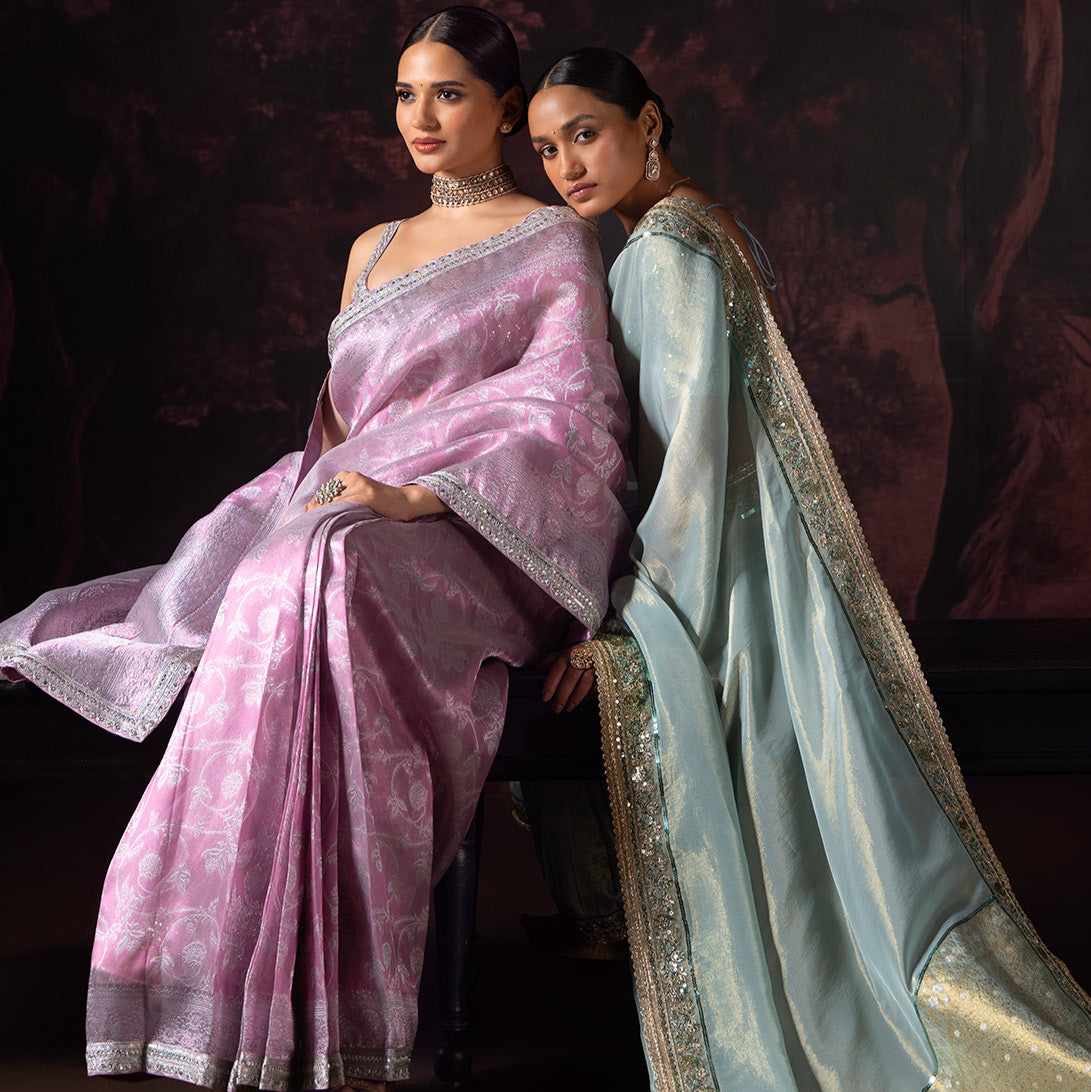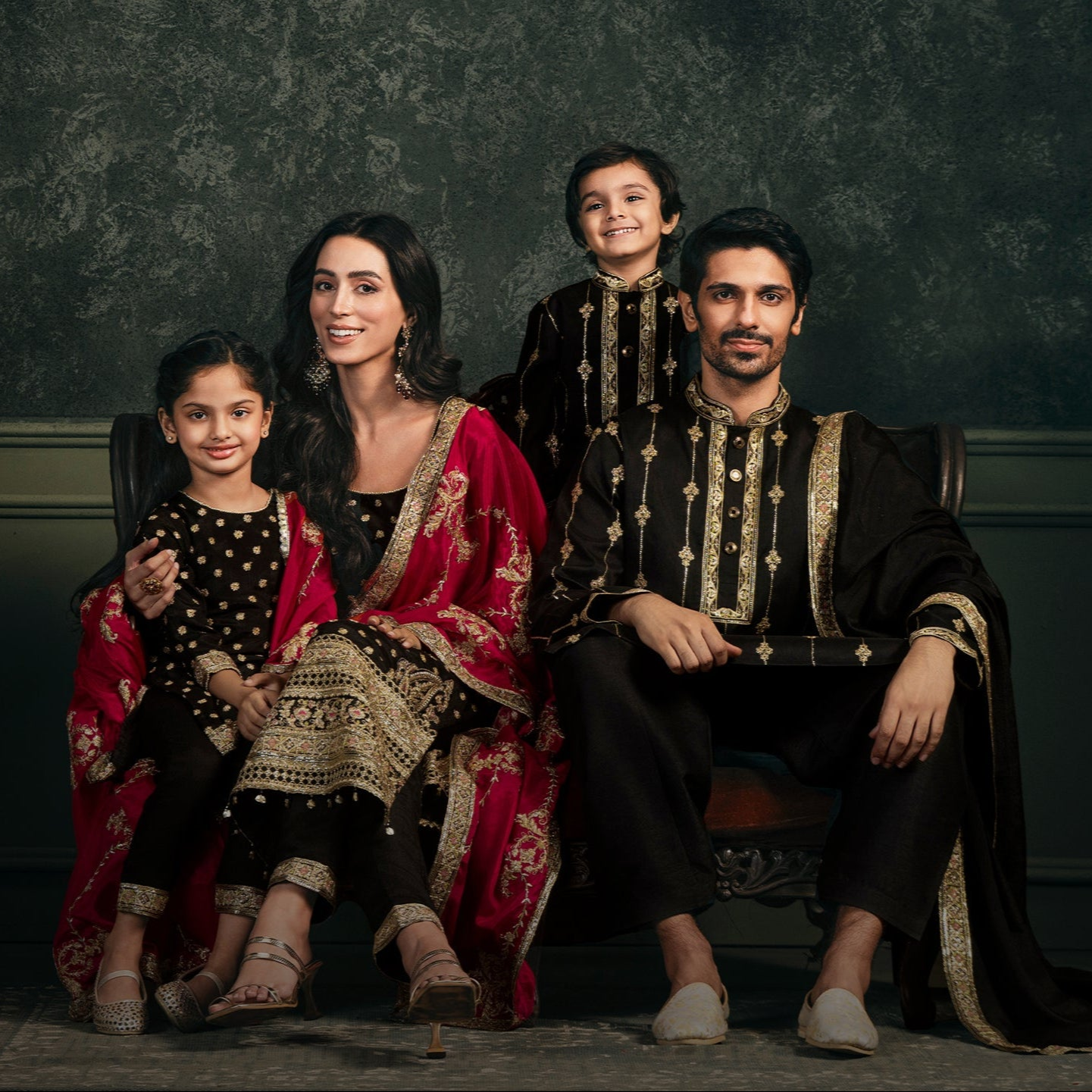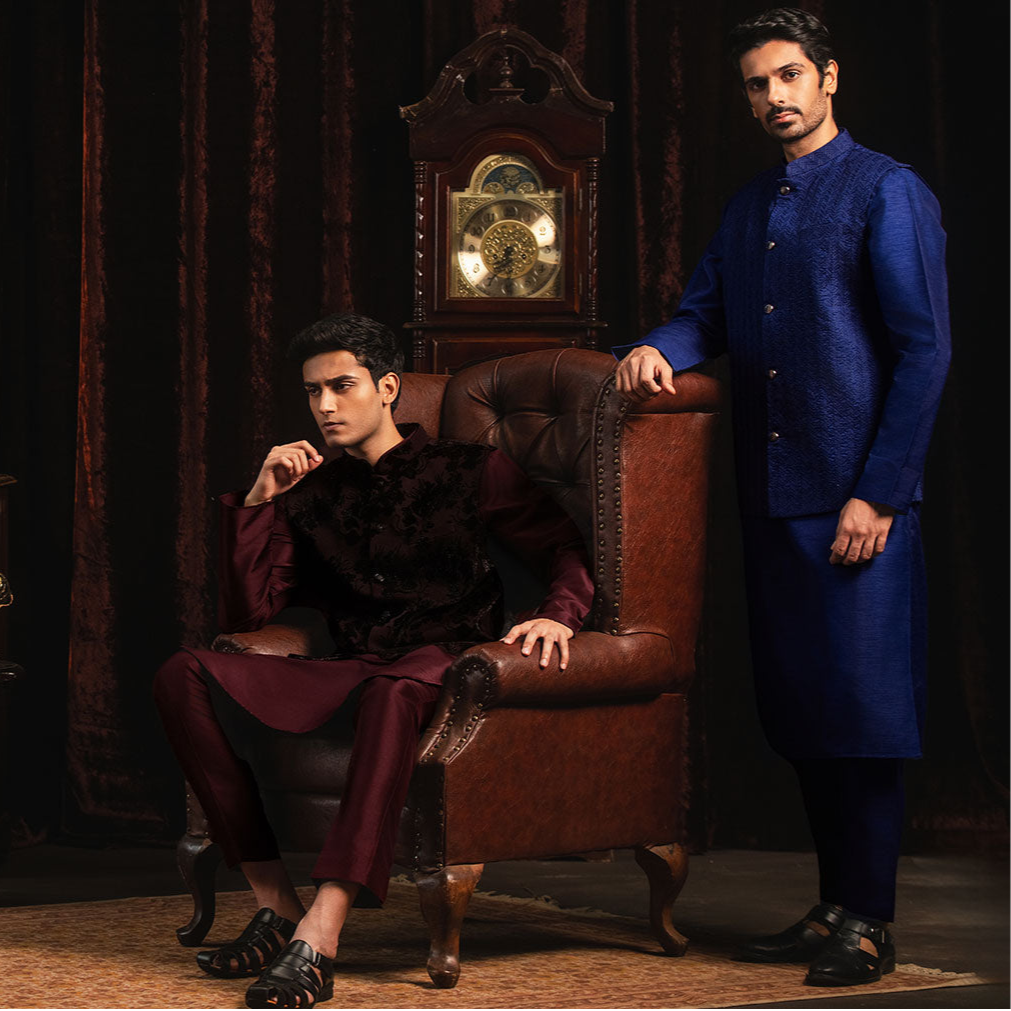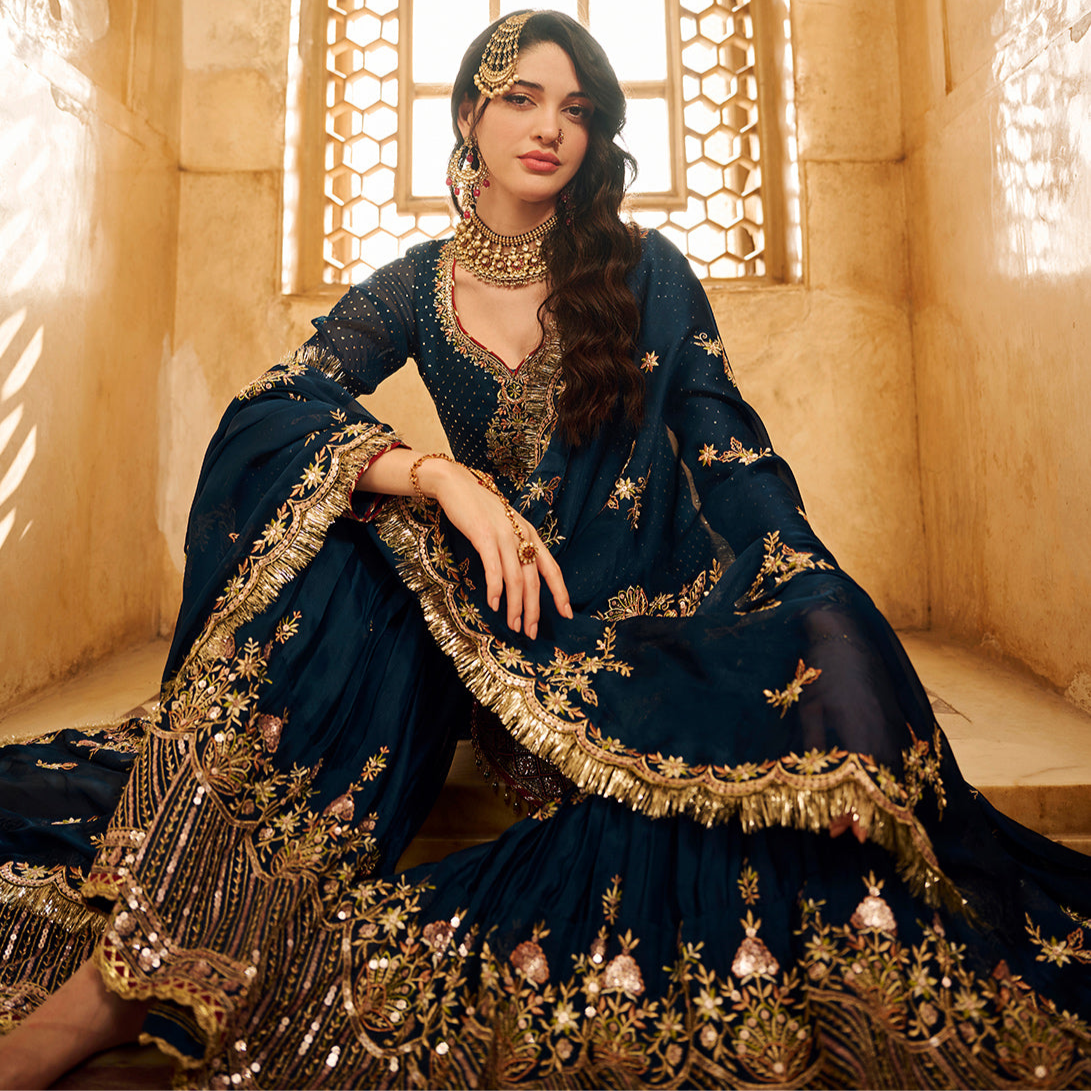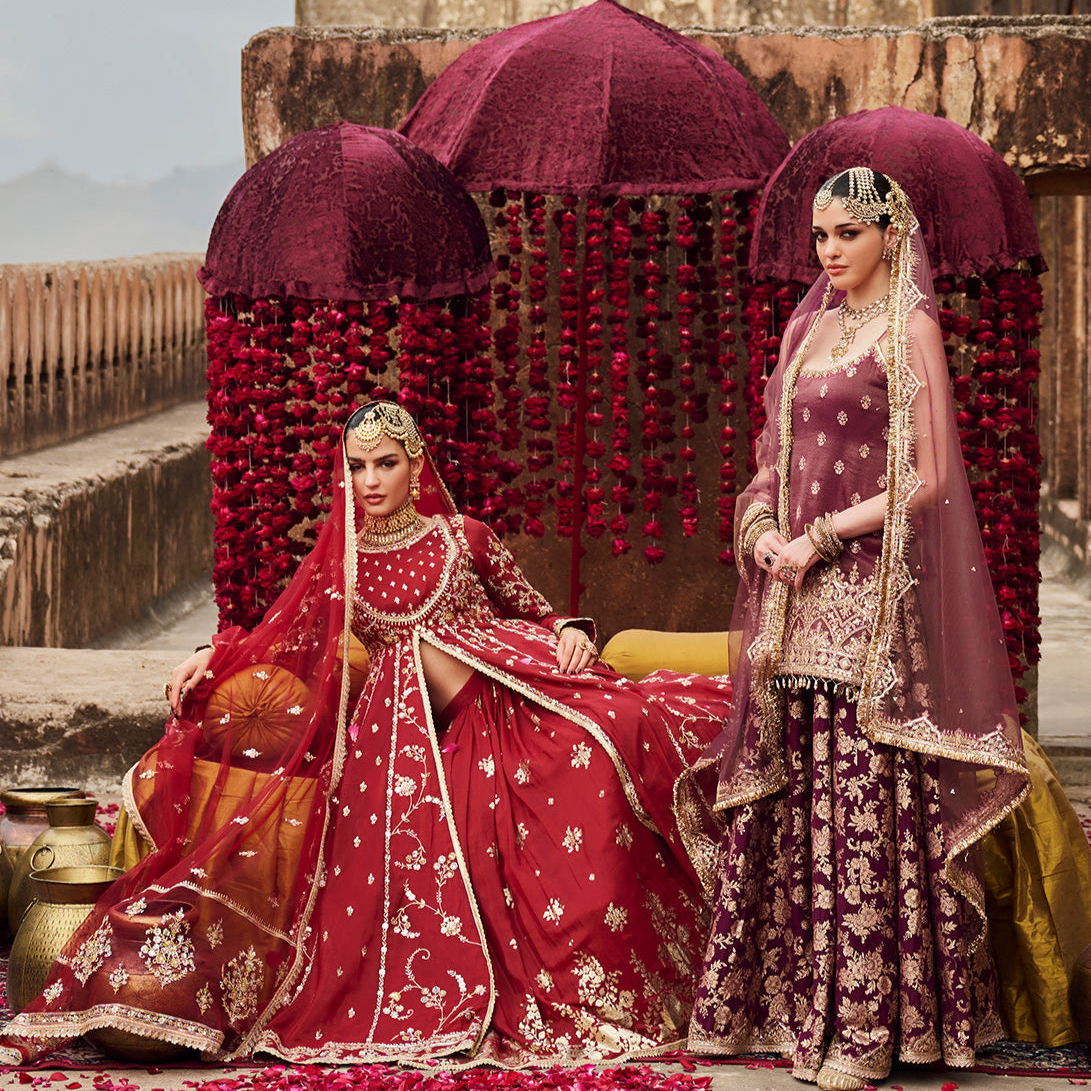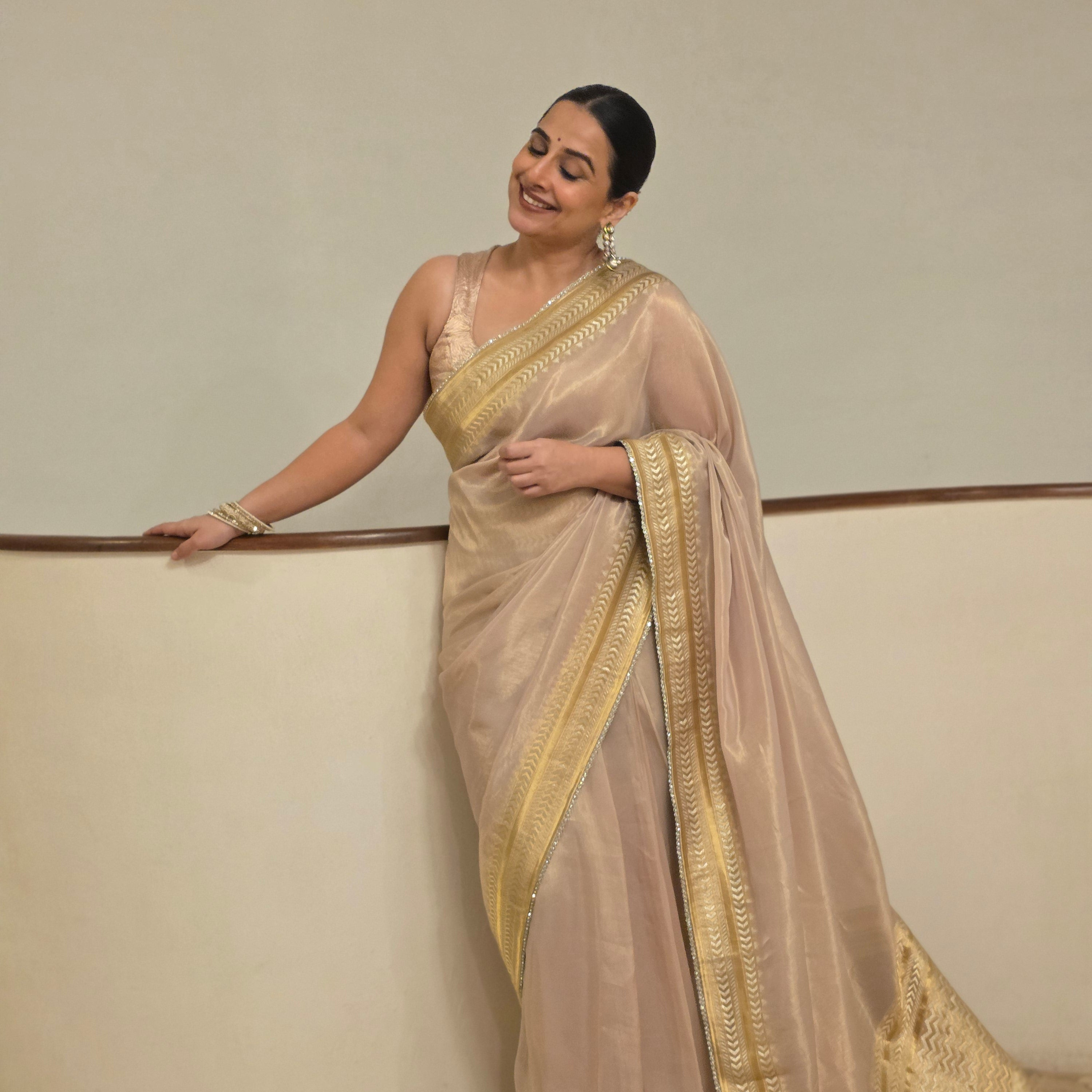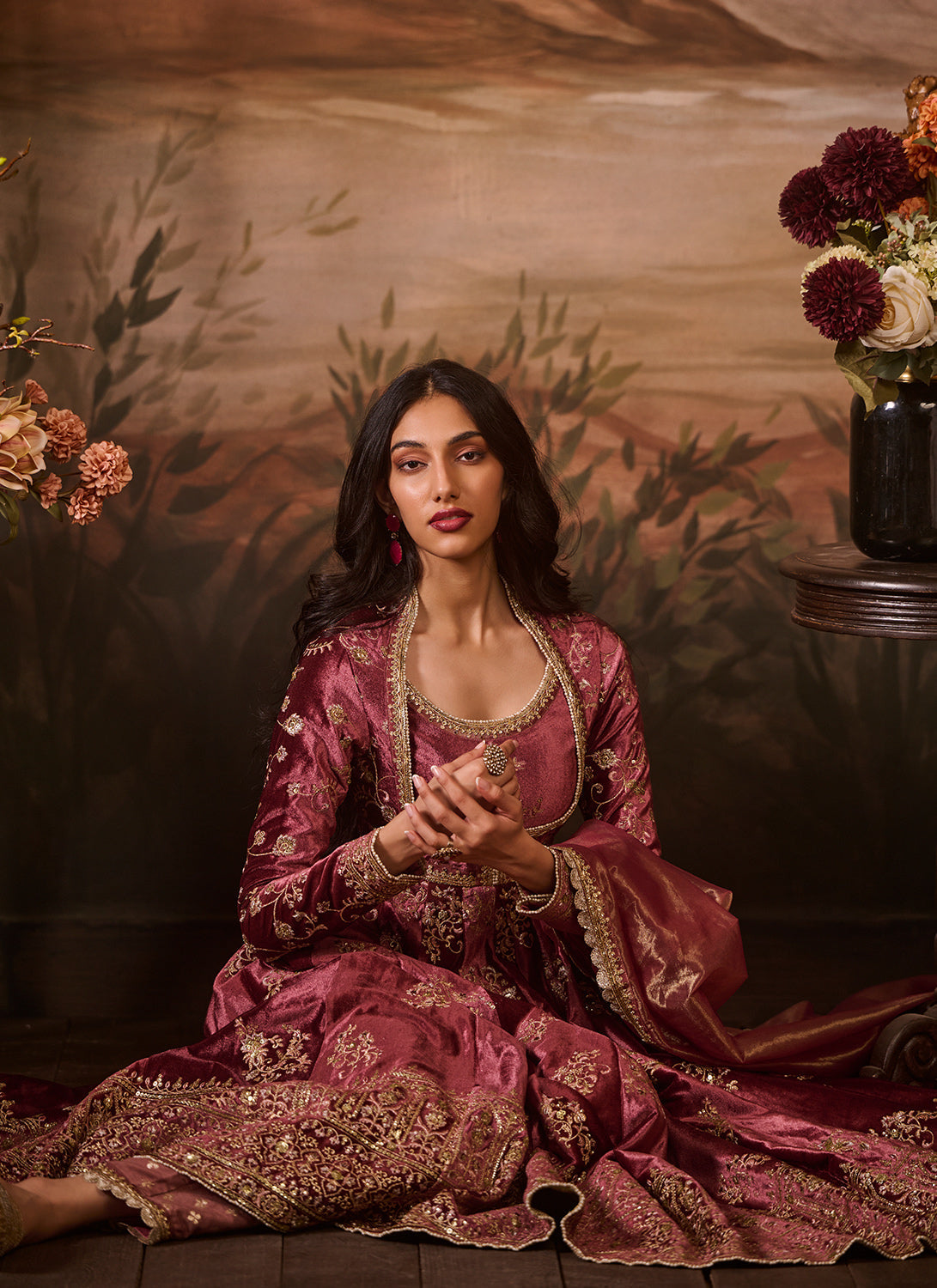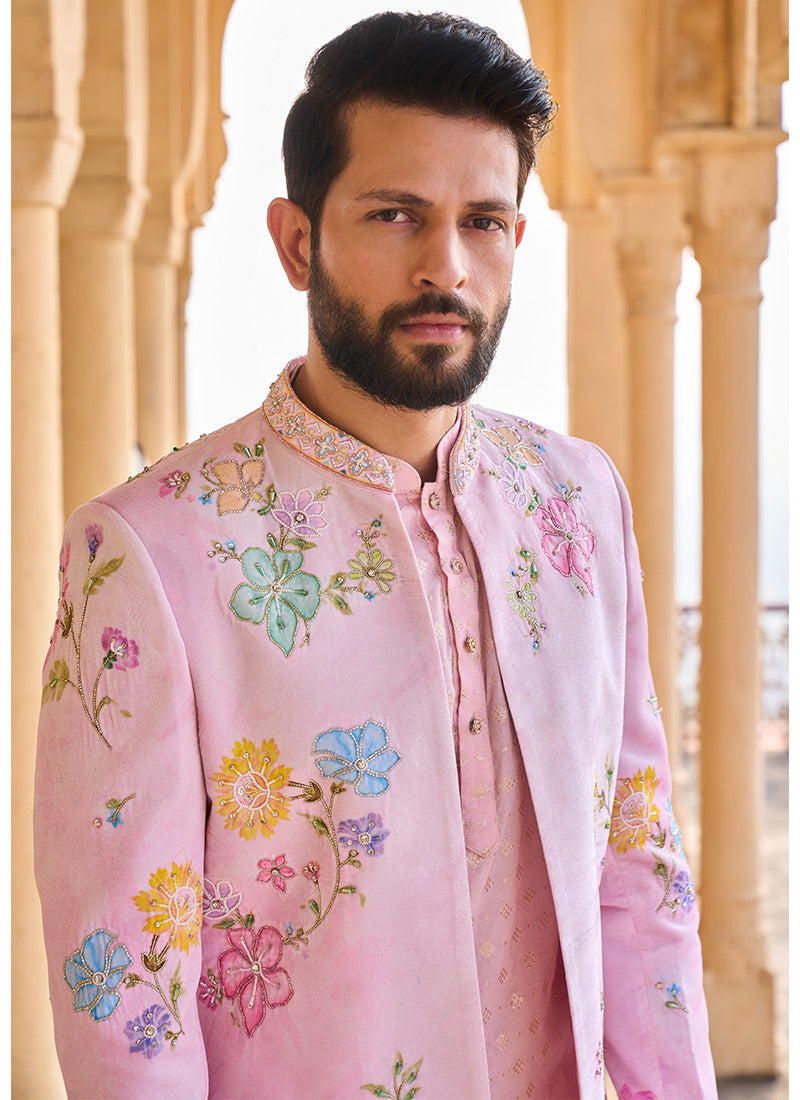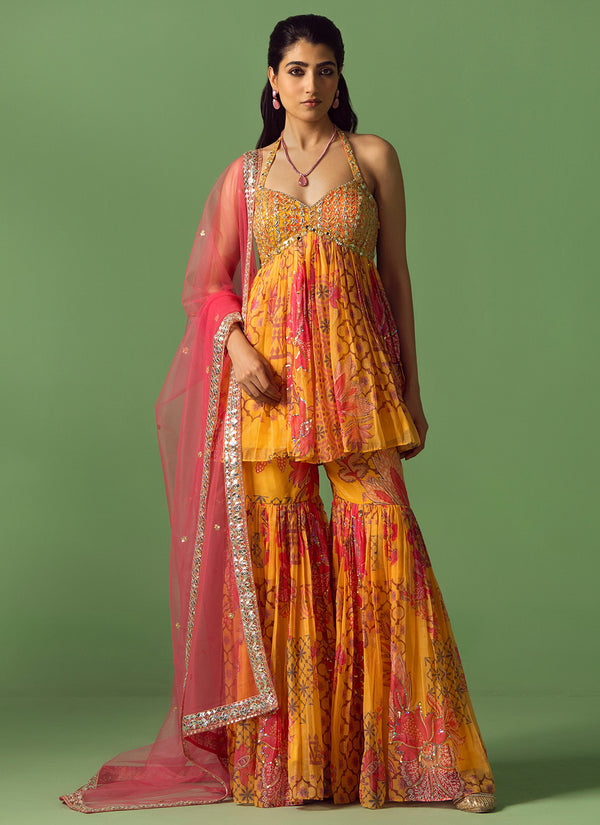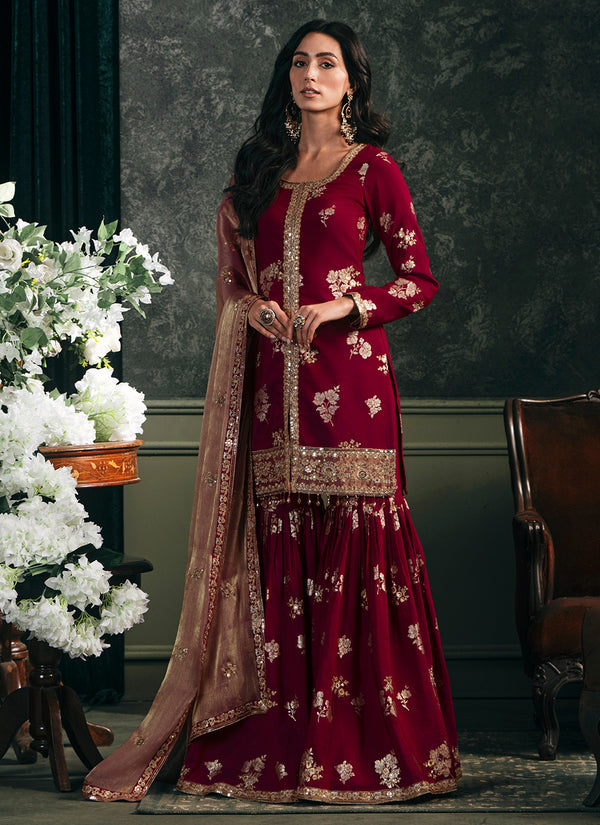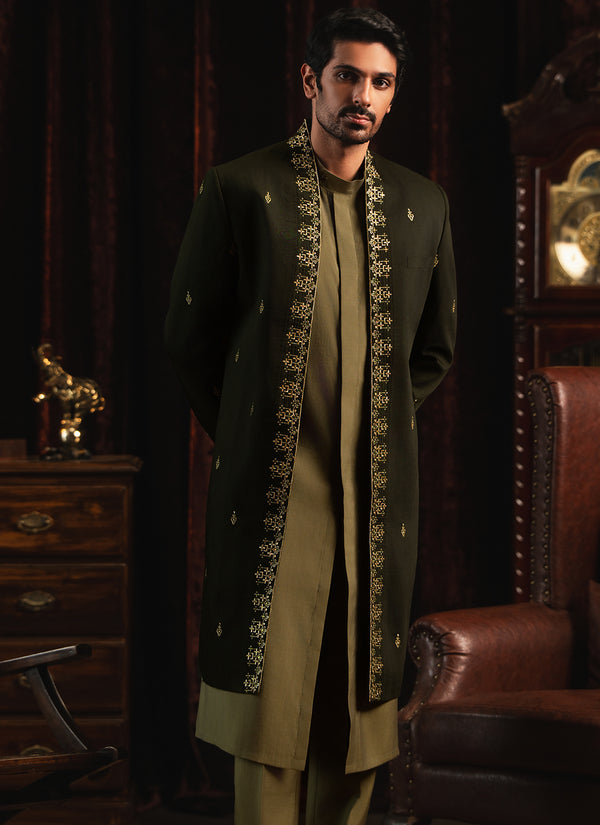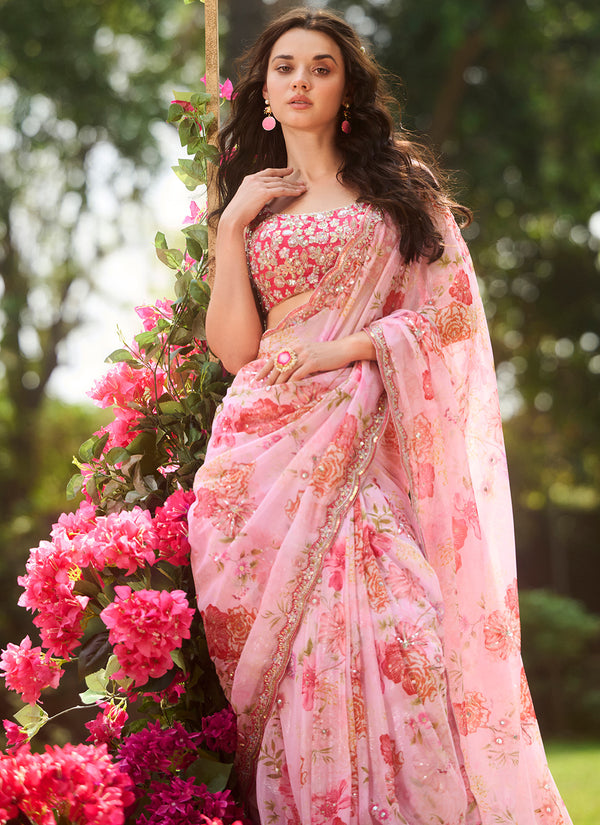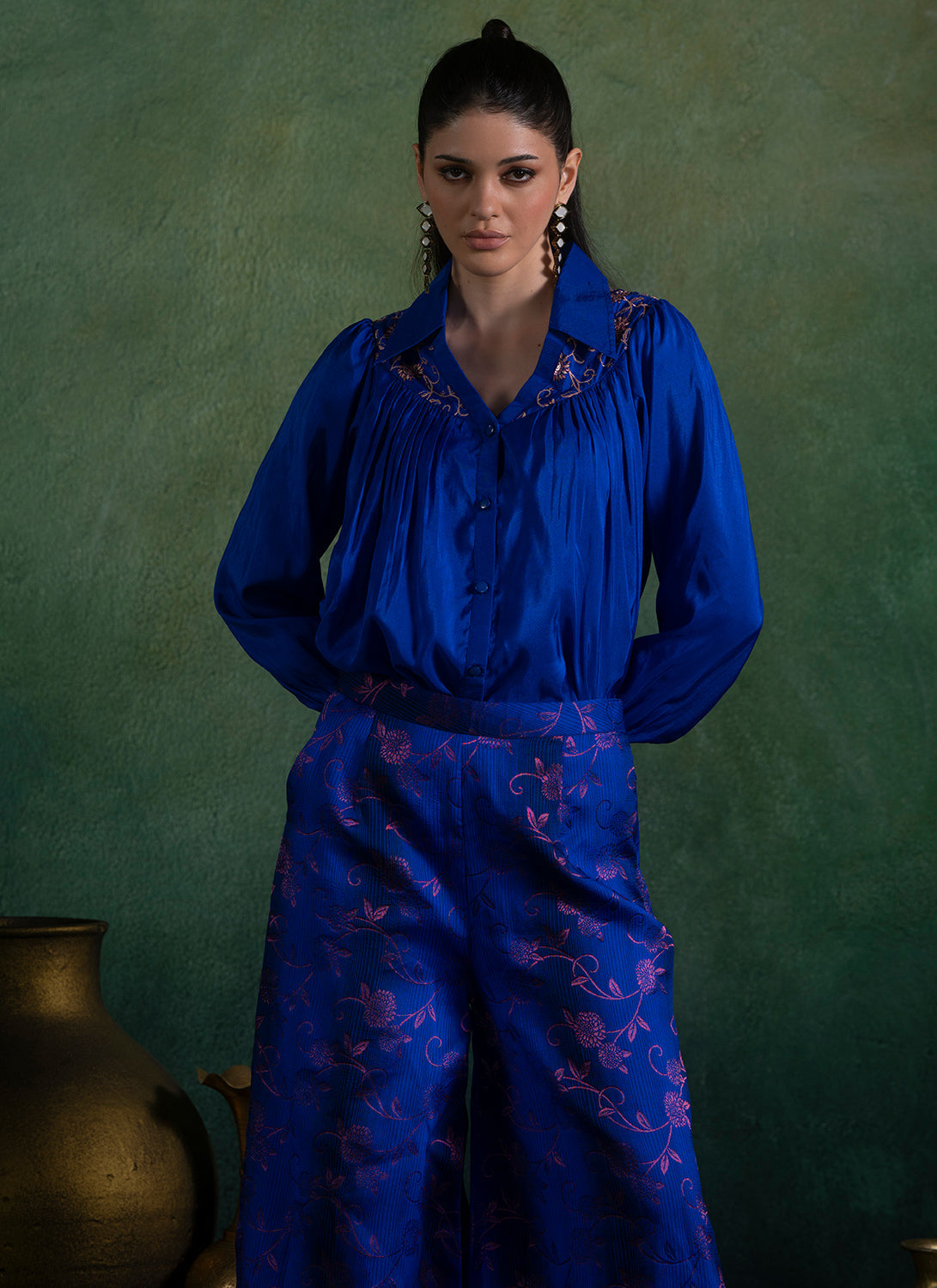
What is Brocade Fabric? Types, Properties, & Uses
Brocade fabric doesn’t try to be subtle. It was never designed for minimalism or simplicity. Woven with ornate patterns and often enhanced with metallic threads, brocade is a textile that draws attention.
For centuries, it’s been used to mark formality, status, and celebration. But beneath its surface-level richness lies technical complexity and cultural significance. This guide explores what brocade is made of, how it’s crafted, and why it continues to be woven into fashion and ceremony alike.
What is Brocade Fabric?
Brocade fabric is a richly decorative and textured textile, often woven from colored silk threads and adorned with intricate patterns, sometimes enhanced with metallic threads like gold or silver.
Recognized for its three-dimensional floral motifs, brocade has become synonymous with luxury, formality, and traditional heritage. Its slightly raised surface patterns give it an embroidered feel, even though these designs are woven rather than stitched. Brocade is favored for both its aesthetic value and the cultural richness it represents in festive and ceremonial wear across many cultures.
Brocade symbolizes the fusion of textile art and storytelling. Every weave and motif holds meaning, often reflecting nature, mythology, or royal iconography. This makes traditional brocade not only beautiful but also deeply expressive.
What is Brocade Fabric Made Of?
Traditionally, brocade was made from pure silk, lending it a soft, luminous quality that feels as regal as it looks. Today, as fashion has evolved and demand for more accessible options has grown, brocade has also begun to be woven from synthetic fibers and yarns like polyester, rayon, and nylon. These modern versions retain the rich texture and look of traditional brocade while being more cost-effective and easier to care for.
The fiber used plays a huge role in determining the overall finish of the fabric. While silk brocade is prized for its natural sheen and smoothness, synthetic brocade tends to be slightly stiffer but highly durable. Cotton-based brocade offers a matte, breathable alternative that suits warmer climates and lighter garments.
Ultimately, the choice of fiber affects how brocade feels, falls, and functions, so the best version depends on the look and comfort you’re after.
Types of Brocade Fabric & Properties Explained

Brocade comes in many forms, each with unique traits based on fiber content and weaving technique. Here’s a breakdown of the most common types:
Silk brocade remains the most prestigious version, offering a soft, flowing drape and a beautiful sheen. The colors tend to appear richer on silk fabric, and the designs more refined, making it a staple in bridal and festive wear.
Synthetic brocade is a more recent innovation, designed to emulate the luxury of silk but with added resilience and lower cost. It’s often chosen for contemporary ethnic fashion that requires structure and wearability without compromising on impact.
Metallic brocade incorporates gold and silver threads, creating a luminous effect that instantly elevates the garment. Zari work brocades, like such, are a popular choice for special occasions like weddings, receptions, and evening festivities.
Cotton brocade offers a more understated elegance. Lightweight and breathable, it is ideal for semi-formal or daywear, striking a balance between tradition and comfort.
Blended brocade weaves together natural and synthetic fibers to achieve the best of both worlds. These fabrics deliver elegance without the high maintenance typically associated with pure silk or metallic threads.
How is Brocade Fabric Made?
Brocade is made on a jacquard loom, which allows weavers to craft complex raised patterns into the base fabric. Unlike prints or embroidery, the motifs in brocade are woven into the fabric using supplementary weft threads, which are floated across the surface to form the design. This process results in a slightly embossed, luxurious texture.
The creation of brocade is an elaborate process, often requiring considerable craftsmanship and patience. Artisans manually program the design onto the loom or use punch cards that control the lifting of warp threads. Some motifs require different threads to be woven at varying tensions, adding depth and intricacy. The result? A fabric that feels alive with texture and meaning.
History of Brocade Fabric in Global Fashion
Brocade’s origins trace back to ancient China, where it was developed as a high-status textile reserved for emperors and elites. Over time, the fabric traveled along the Silk Road into Persia, Byzantium, and eventually Europe. During the Italian Renaissance, brocade enjoyed enormous popularity among Italy‘s nobility, with cities like Venice and Florence emerging as textile powerhouses.
In India, brocade reached new artistic heights during the Mughal era. Varanasi, in particular, became a renowned center for brocade fabric, producing the iconic Banarasi brocade, which is famed for its detailed zari work and intricate designs. Brocade garments were considered heirlooms and passed down through generations.
Globally, the fabric still evokes a sense of grandeur, and its association with ceremony and celebration remains unshaken.
Modern Uses of Brocade Fabric: Fashion & Beyond

Brocade has moved beyond its traditional roots and now serves as a foundation for innovation in both ethnic and fusion fashion. Brocade brings richness and dimension to everything from tailored jackets and cropped blouses to structured lehengas and regal sarees.
At Lashkaraa, brocade has been reimagined in luxurious silhouettes for the modern woman. The Maroon Embroidered Brocade Lehenga With Jacket is a masterpiece of structure and heritage, featuring an embroidered longline jacket paired with a voluminous lehenga. The deep maroon tone adds drama, while the brocade’s texture elevates the ensemble into a regal statement.
The Royal Blue Embroidered Brocade Lehenga is another highlight, featuring luminous blue fabric woven with golden patterns that shimmer as you move. It’s ideal for receptions or pre-wedding functions and embodies traditional glamor with a contemporary twist.
For saree lovers, the Blue Embroidered Brocade Saree offers timeless sophistication. Its richness lies not just in the embroidery but in the layered depth that brocade fabric naturally provides.
Similarly, the Royal Blue Embroidered Brocade Blouse and Pant Set reinvents ethnic wear with tailored confidence, ideal for cocktail nights and intimate gatherings where tradition meets power dressing.
Outside of fashion, brocade is often used in home decor, especially for upholstery, draperies, and table runners, where visual richness and tactile depth are prized.
How to Care for Brocade: Do's and Don’ts
Brocade, especially intricate garments, is a delicate fabric and benefits from careful handling.
For best results, always dry clean brocade garments, especially if they include metallic threads or silk. Machine washing can damage the intricate weave or lead to shrinkage.
Store brocade outfits in a dry, dark place, preferably wrapped in muslin or acid-free tissue. Avoid hanging heavier brocade garments as they may lose shape. Fold and store them flat if possible. If hanging blouses or jackets, use padded hangers to prevent creasing or damage to the shoulders.
Never wring or twist brocade when damp. Instead, gently press between towels and air-dry in the shade—iron on the reverse side with a protective cloth to avoid direct heat contact with the fibers.
Alternatives to Brocade Fabric
If brocade feels too heavy or ornate for a particular occasion, there are several alternatives that maintain the luxurious feel without the same level of embellishment.
- Jacquard fabrics feature similarly woven designs but are usually subtler in texture.
- Velvet offers a plush, regal look and depth similar to brocade, while Banarasi silk presents a lighter take on traditional richness.
- Banarasi Silk has a lighter, more fluid take on the traditional richness of brocade.
- Chanderi is perfect for breezy, semi-formal wear, providing a sheerer, shinier fabric with a touch of metallic glamour in its zari work.
Each of these fabrics brings something different in terms of weight, drape, and styling, giving designers and wearers plenty of choice.
Experience the Craft of Brocade at Lashkaraa
Brocade fabric is a wearable form of history and artistry. At Lashkaraa, we craft brocade garments that honor centuries of tradition while empowering today’s generation to wear them boldly. From weddings to festive dinners, from heirloom sarees to modern co-ords, our brocade collection reflects elegance that lasts.
Ready to explore brocade in its finest forms? Shop our latest styles and find a piece that feels just as timeless as the fabric itself.

Sources:
Chinese brocade is intricate and stunning. | National Geographic

